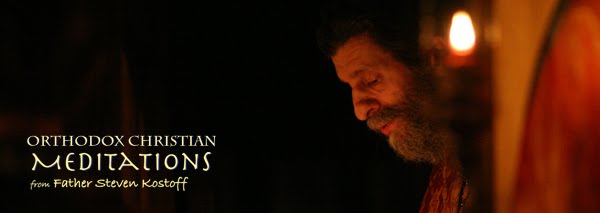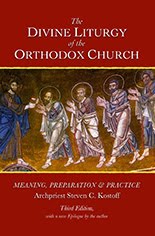Dear Parish Faithful,
An excellent article by Fr. Schmemann...
Pentecost, the Feast of the Church
by Protopresbyter Alexander Schmemann (+)St. Vladimir’s Seminary Quarterly, Spring & Summer 1953, Nos. 3, 4, pp 38–42
Synaxis Blog, June 5, 2017:
This past Sunday, we Orthodox Christians heard sermons in our parishes about the meaning of Pentecost, which celebrates the Descent of the Holy Spirit upon the Apostles of our Lord Jesus Christ, and the abiding presence of the Spirit in the Church throughout the ages.
In this essay, Father Alexander (Dean of St. Vladimir’s 1962–1983) also begins by speaking about major themes that characterize this great feast: the presence and actions of the Spirit in the Church, the revelation of the Holy Trinity, and the purification of each person’s soul in the body of Christ.
However, one of the most interesting portions of Father Alexander’s essay, published in 1953, is his explanation of the “Kneeling Prayers,” that mark the Vespers services following the Divine Liturgy for the feast, and that section is reprinted here.
___________________________
The peculiar characteristic of the Liturgy on the day of Pentecost is that it is immediately followed by a Vesper service that is commonly called “kneeling prayers.” This Vesper service signifies the transition from the first major theme—the joy of the coming of the Spirit—to the second—the prayer for the abiding of the Spirit in us, for His help in our earthly life.
Litany supplications are added: “For the people present who are awaiting the Grace of the Holy Spirit…that the Lord may strengthen us into the attainment of a good and acceptable end… For those who are in need of help.”
And in the sticheras for “Lord I have cried unto Thee” (which repeat the chvalitny of the Matins service) and in the great prokeimenon, “Who is a great God like our God?,” the fullness of joy comes once more.
But immediately after the prokeimenon, the people are asked to kneel down. This first bending of the knees after Easter signifies the conclusion of the Triodion—the fact that the Church now enters the “narrow path” of struggling, and of the difficult daily acquisitions of the Holy Spirit.
Therefore, in this first prayer, we bring to God our repentance and augmented prayers for forgiveness of sins—the first condition for entering into the kingdom, into the perfect joy. In the second prayer, we pray to the Holy Spirit for help, that He would teach us to pray and to follow the true path, that He would enlighten us in the dark and difficult night of our life. Finally, in the third prayer, we remember our fathers and brethren who have departed, who have finished their earthly journey, but who are united with us in the eternal love of the Church.
To every one of these prayers the usual evening prayers are added. So again begins the night of the history of the world, in which the Church has to wander.
In this “night,” the enemies’ tricks are awaiting us: temptations, the whole burden of sin and our feebleness. The joy of Easter has been completed, and we again have to wait for the dawn of the eternal day of Christ’s kingdom. Therefore we are praying on our knees for help and protection, so that we may pass this night and attain to the morning.
However, as we know our weakness, we also know the joy of the Spirit who has come: we know that we have not remained orphans. The benediction at the end of the Vespers service bears His testimony to it:
“He emptied Himself… came down on earth to take upon Himself our human nature wholly and to deify it… He sent down His Spirit upon His Holy Apostles, who were illumined by the Spirit and through whom the whole world was illumined.”
At the Compline service of the same day a special canon to the Holy Spirit is sung, where we experience once more the feast of His coming and His abiding in the Church. It is significant that all the irmois of this canon, except the first, are taken from the canon of the Nativity! The coming of the Spirit fulfills that which began when the Word became flesh:
“Christ was born, now the Holy Spirit descends as if returning Christ to us, who ‘is and shall be’ in the Church with us forever.”
It would be impossible to enumerate all the details of the services commemorating the Feast of Pentecost, which blend into one perfect harmony, making us truly feel the breathing of the Holy Spirit. This harmony reveals itself fully only in the Liturgy, only in the common act of worship. As we have said, the Feast of Pentecost concludes the Triodion, and we enter the “ordinary season” of the year. However, there are no ordinary days for the Church. Every week has its cycle, which is concluded with its own small Easter—“Sunday.”
The Church is always living a divine-human life. Heaven and earth, promise and fulfillment are mysteriously united in Her. On the Feast of Pentecost, we adorn our churches with flowers and green branches, for the Church is truly an evergreen tree. Therefore on the First Sunday after Pentecost, we celebrate the memory of all the saints, whose holiness is the glory of the Church and a testimony to the Holy Spirit, who is ever present in Her.
The life of the Church is an eternal Pentecost, the eternal coming of the Holy Spirit, and so, “whosoever thirsteth, let him come and drink” (John 7:37).









